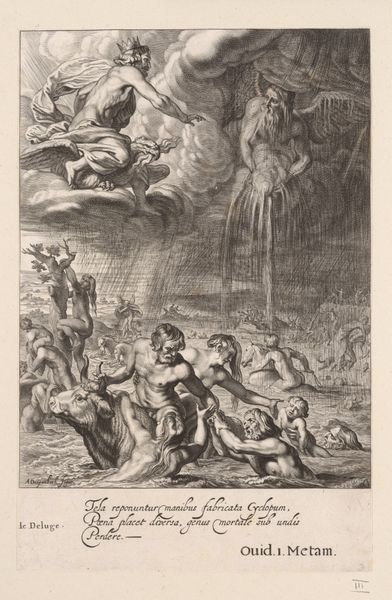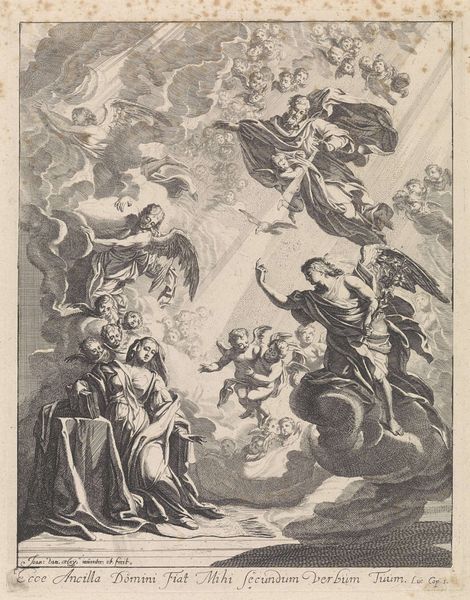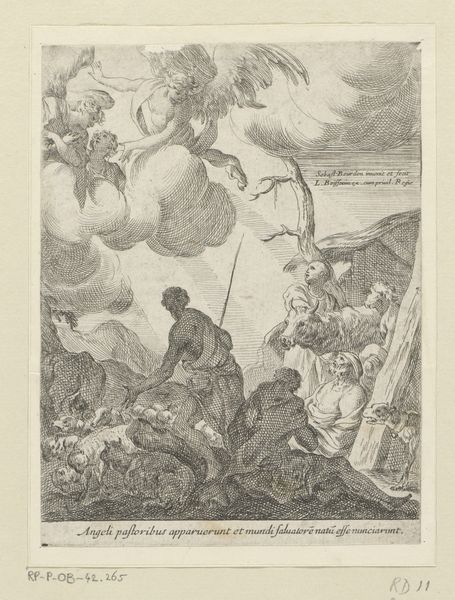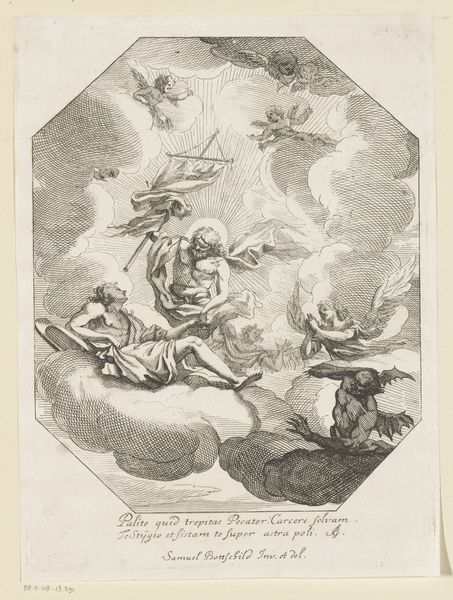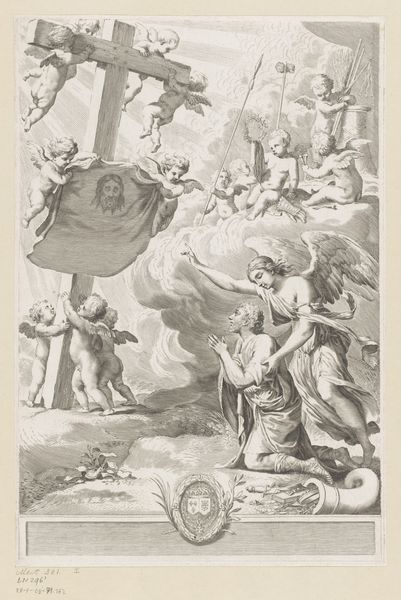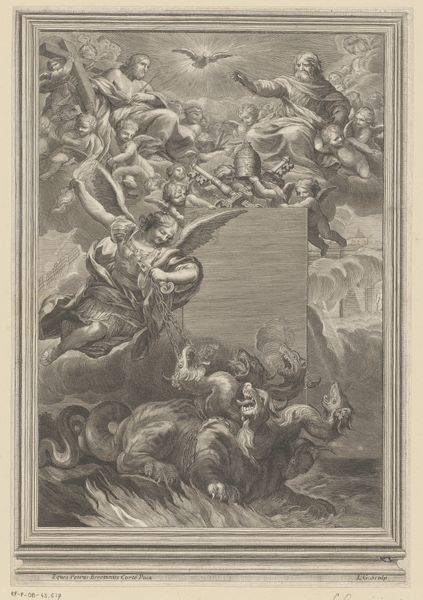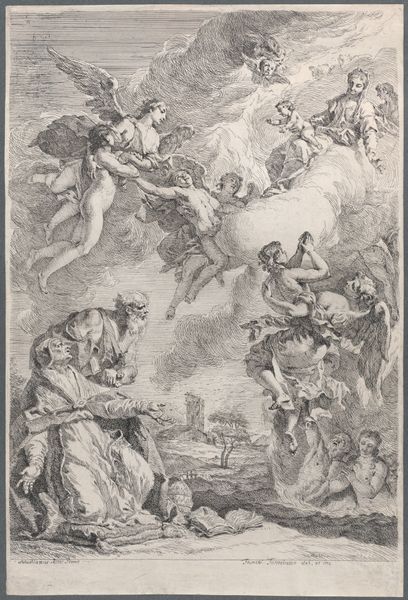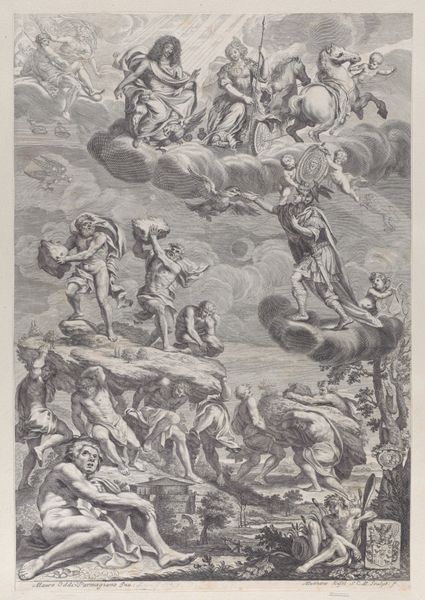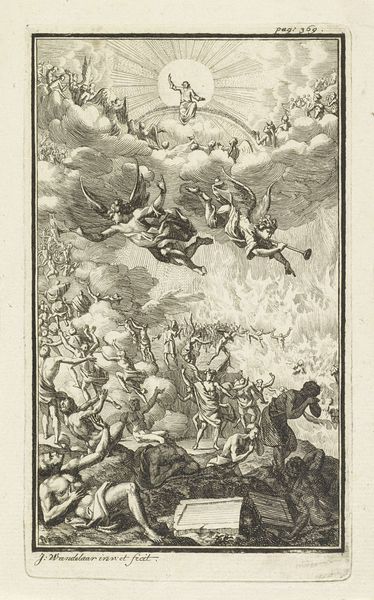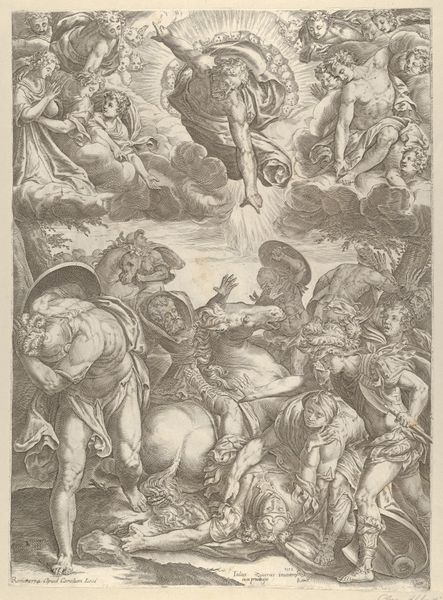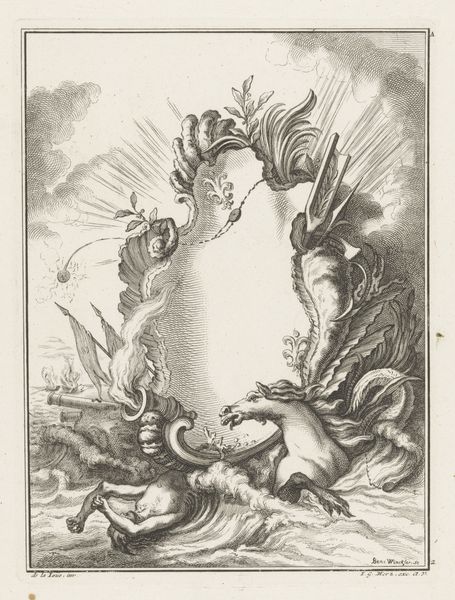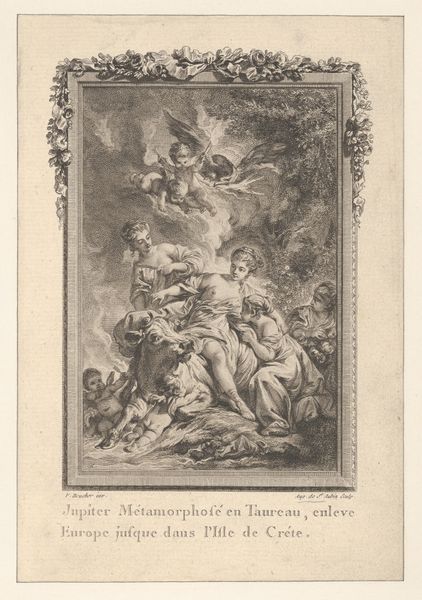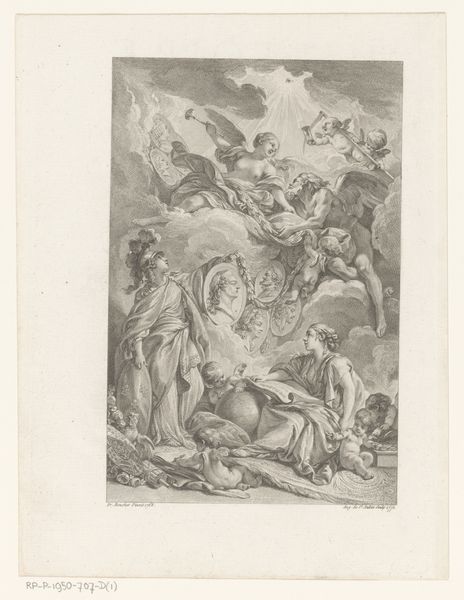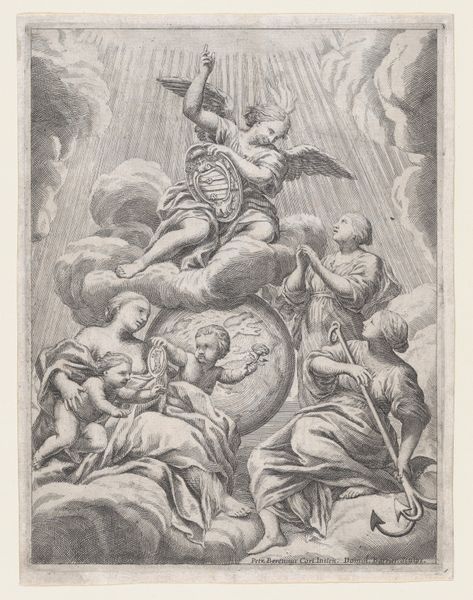
Neptune apaisant la tempête (Neptune Calming the Storm) 1742 - 1780
0:00
0:00
Dimensions: Sheet: 24 3/16 x 17 1/2 in. (61.4 x 44.5 cm) Plate: 23 1/8 x 16 in. (58.8 x 40.6 cm)
Copyright: Public Domain
Editor: Here we have "Neptune Calming the Storm," an engraving by François Antoine Aveline, made sometime between 1742 and 1780. It's packed with figures and drama, that's for sure! The detail is incredible, especially considering it’s just lines on paper. How do you interpret its historical significance? Curator: Considering the context of its creation, it's crucial to see this work as more than just an illustration of mythology. Aveline’s engraving operates within a very specific economy of images. How do you think prints like these functioned in 18th-century Europe? Editor: Hmm, well, wouldn’t it allow wider access to artwork at that time, even among different countries? Curator: Exactly! Prints played a critical role in disseminating knowledge, taste, and even political ideas. They acted as a form of visual journalism, spreading grand historical or mythological paintings, like this one depicting Neptune, beyond the walls of aristocratic collections. They bring art into the public realm. Think about how the themes depicted, Neptune’s power and ability to restore order, could resonate in a society grappling with political and social upheavals. It served a political purpose as much as it was aesthetically appealing. Editor: I didn't consider the politics of image distribution. Does the print medium influence how we see the image and its intended message? Curator: Undoubtedly. Engravings lack the color and texture of painting. What effect do you think that choice of medium had? Editor: Well, it encourages the viewers to focus on the line work, maybe amplifying a sense of control in depicting chaotic waves and muscular gods. It almost makes the scene seem…manageable, or even didactic? Curator: Precisely. And think about where people may have seen this—bound into books, framed on walls of middle-class homes, feeding a public imagination. It reinforces a narrative and solidifies social hierarchies, all the while shaping visual culture beyond elite circles. I find it so powerful to consider art beyond museum walls. Editor: Me too. Now, looking at the art and how the public receives it makes art so much more relevant! Thank you for shedding some light on the topic. Curator: My pleasure! It is so very crucial to think about it.
Comments
No comments
Be the first to comment and join the conversation on the ultimate creative platform.
